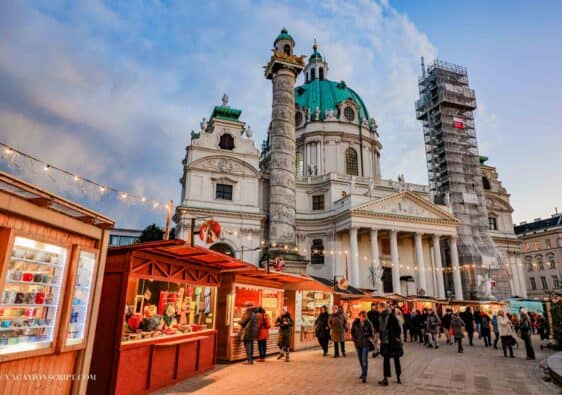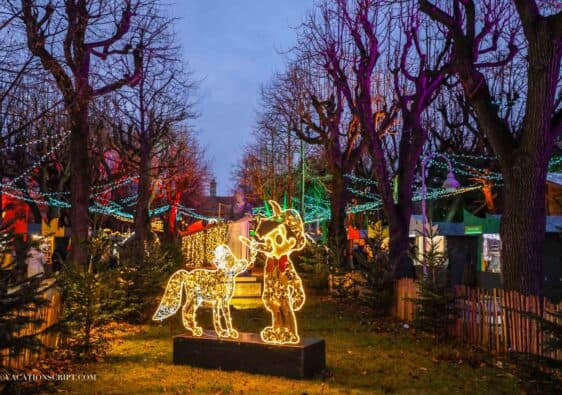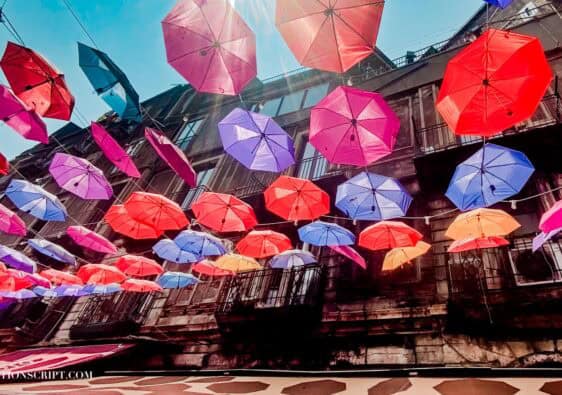Are you wondering where to go for Northern Lights sightings, a spectacular natural phenomenon? If it’s not already on your bucket list, it might find its way there after you learn about the mesmerizing spectacle that awaits. Imagine standing beneath an inky Arctic sky as shimmering ribbons of light weave, casting an ethereal glow. It’s a natural wonder that defies explanation, a dance of colors that has inspired centuries of legends, myths, and dreams. Some claim viewing them in person is nothing short of a spiritual experience.
The Ultimate Guide To Where To Go For Northern Lights Viewing
The magic of the Northern Lights, also known as the Aurora Borealis, is a celestial masterpiece that graces only a few lucky locations on Earth. With even fewer eyes that get to behold this world wonder, careful planning and research are needed to ensure your front-row seat to this cosmic dance. This blog post is your guiding star in experiencing this extraordinary phenomenon.
Join us as we delve into the secrets of where to go for Northern Lights, revealing the what, where, when, and why of this awe-inspiring adventure. Whether you’re a seasoned traveler or a first-time explorer, the Aurora Borealis promises an unforgettable experience. So, let’s embark on this celestial voyage and make your Northern Lights dreams come true. Here’s everything you need to know (except what to pack) before you book your trip.
Aurora Borealis Table of Contents
Best Months to Book Your Trip to See the Northern Lights
When planning your Northern Lights adventure, timing is crucial. While it’s true that the Aurora Borealis is a natural phenomenon that can be challenging to predict with absolute certainty, understanding the factors that influence its appearance can significantly increase your chances of witnessing this mesmerizing spectacle. If you’re eager for a brighter and more intense light show, plan your trip sometime between late September and early April 2025 Given the enormous time range, let’s dive deeper into dates to assist you in pinpointing the perfect moment for your adventure.
A fascinating debate surrounds when to experience the Northern Lights at their darkest. Some travelers opt for a journey during the elusive new moon phase. However, there’s a twist if you yearn for mesmerizing images to capture your Northern Lights adventure forever. While creating optimal real-time viewing conditions, the new moon can cast a dark shadow on your landscape for ideal photography aspirations.
The excellent news is that there are two times a year that you are two times as likely to see the stunning Aurora Borealis. It’s also known as the Aurora season. Along with that recipe, you will need clear skies since the Northern Lights dance high above the clouds. Let’s look closer to determine the best time to plan your trip.
Solar activity = Northern Lights
Solar activity and geomagnetic storms are vital to predicting where to go for Northern Lights activity. The sun goes through increased and decreased activity cycles, known as the solar cycle. Currently, the sun is heading towards its solar maximum, which occurs every 11 years. Giant eruptions on the sun, such as solar flares and coronal mass ejections, increase during this time. These eruptions send potent bursts of plasma into space. This period of heightened solar storms is conducive to more frequent and intense Northern Lights displays. NASA visually explains this phenomenon in a short video.
If you’re wondering where to go for the Northern Lights at their most spectacular, the years around the solar maximum are prime times to plan your adventure. Lucky for us, 2025, and 2026 are expected to be particularly promising for Northern Lights enthusiasts. Therefore, planning your trip before the end of 2026, when solar storm activity decreases, would be wise!
Moon or New Moon? Finding the Right Balance for Your Northern Lights Adventure
The Northern Lights are most visible when the skies are darkest. This is a critical factor because the darkness provides the perfect backdrop for the vivid colors of the Aurora to shine through. That said, it can be seen in daylight if you are blessed to witness a fierce Aurora Borealis in a clear sky.
Jim Spann from the Marshall Space Flight Center points out that our planet hosts auroras continuously, around the clock. Remarkably, these auroras are observable even during daylight hours. The key, he elaborates, lies in being graced with the appropriate wavelength.
When planning your Northern Lights adventure, the moon’s presence in the night sky is a consideration that can influence your overall experience. There’s a bit of controversy over whether to plan your visit around a new moon or embrace the subtle glow of a crescent moon, and the choice largely depends on your preferences and the conditions of the Aurora Borealis during your visit.
New Moon: The Darkest Skies
A new moon occurs when positioned between the Earth and the sun, leaving its illuminated side hidden from view. This means the night sky is at its darkest during a new moon. For Northern Lights enthusiasts, this can be a double-edged sword.
Advantages:
Optimal Darkness: A new moon provides the darkest possible backdrop for the Northern Lights to shine. If the Aurora is relatively weak during your visit, the absence of moonlight can enhance your chances of witnessing the curtains of light across the pitch-black sky.
Disadvantages:
No Landscape Illumination: The absence of moonlight means the landscape beneath the Aurora remains shrouded in darkness. While this can create a surreal and dramatic effect, it also means that you won’t see the surrounding trees, mountains, or landscape features in your photos if that’s an essential factor for your trip.
Crescent Moon: The Gentle Glow
Planning your Northern Lights adventure during a crescent moon phase allows for a subtle but beautiful lunar glow in the night sky. This can add a unique dimension to your experience, especially regarding photography.
Advantages:
Landscape Illumination: The crescent moon’s soft glow can illuminate the landscape, adding depth and detail to your photographs. This can be particularly appealing if you want to capture the Aurora alongside the natural surroundings.
Disadvantages:
Reduced Darkness: While the moon’s glow can enhance your photos, it may slightly diminish the overall darkness of the sky. This could affect the Northern Lights’ visibility, especially if they are faint during your visit.
In summary, choosing between a new moon and a crescent moon for your Northern Lights adventure depends on your priorities. If you prioritize capturing the celestial display against a pitch-black backdrop, a new moon might be your preference. On the other hand, if you wish to include the landscape in your photographs and are willing to trade some darkness for the moon’s gentle glow, then a crescent moon phase could be more appealing.
Ultimately, understanding how to see the Northern Lights and the strength of the Aurora Borealis during your visit will also play a role in determining how much the moon’s presence affects your experience. Regardless of your choice, witnessing the Aurora Borealis is a remarkable experience, and careful planning ensures you make the most of this natural wonder.
The Enigmatic Link Between Auroras and Equinoxes
The legendary connection between auroras and equinoxes is rooted in the complex interplay between Earth’s position relative to the sun and the behavior of the solar wind. Here’s a closer look at the basis for this intriguing connection that gives us an Aurora “season.”
There are two times in the year, known as the equinoxes, when the Earth’s axial tilt is neither toward nor away from the sun. During these moments, the Earth’s equator is aligned directly with the sun, resulting in nearly equal amounts of daylight and darkness at all latitudes. These equinoxes occur around late March 20th and September 22nd, making those months twice as likely for you to view the magical northern lights.
Indeed, based on 75 years of historical records analyzed by solar physicist David Hathaway at NASA’s Marshall Space Flight Center, it’s been observed that geomagnetic disturbances are nearly twice as expected during the spring and fall seasons as they are during winter and summer. These disturbances often catalyze the mesmerizing displays of auroras.
During high geomagnetic electrical disturbance periods, such as those around the equinoxes, the Earth’s magnetic field becomes more vulnerable to the solar wind’s effects. This increased interaction between the solar wind and Earth’s magnetic field can lead to more intense geomagnetic storms, enhancing the likelihood and visibility of auroras.
Because of the alignment of the Earth, sun, and magnetic field during the equinoxes, there tends to be an increased likelihood of geomagnetic activity during this time. As a result, March and October are often referred to as “aurora seasons.” The conditions favor observing the Northern Lights during these seasons.
In summary, the legendary connection between auroras and equinoxes is based on the intricate relationship between Earth’s axial tilt, the solar wind, and geomagnetic activity. Understanding where to go for the Northern Lights during these times leads to enhanced opportunities to witness the awe-inspiring auroras, making the equinoxes a particularly captivating time for those seeking the Northern Lights. It’s a reminder of the intricate dance between our planet and the cosmos, where nature’s wonders continue to captivate and inspire.
Clear Skies for Northern Lights Optimal Viewing
To fully appreciate the Northern Lights, you’ll want to ensure clear skies. Cloud cover can obstruct your view of this natural wonder. Therefore, choosing destinations known for their relatively clear skies during winter is essential. Research and select locations with a reputation for minimal cloud cover to maximize your chances of witnessing the Aurora in all its glory.
The Icelandic Met Office measures solar activity and cloud forecasts. Knowing when and where to go for Northern Lights during your Iceland trip can be helpful. Use the slider at the bottom of the chart to adjust the date and time of the forecast for low and medium cloud cover predictions.
One vital piece of advice is to plan where to go for Northern Lights well in advance. The demand for aurora experiences is exceptionally high, especially during peak viewing seasons (around the equinox). Accommodations, guided tours, and other resources can get booked quickly. By planning ahead, you secure your spot and increase the likelihood of having a smooth and unforgettable journey.
In conclusion, where to go for the Northern Lights’ exact appearance may remain a mystery until they grace the night sky; strategic planning based on solar activity, seasonality, and location can significantly enhance your chances of witnessing this breathtaking phenomenon. This 30-minute Aurora forecast may also help you during your trip. So, start preparing early for a spiritual adventure like no other.
Where to book your trip for Northern Lights Experiences
The Northern Lights grace several destinations worldwide, but a few stand out for their exceptional viewing opportunities. Let’s explore the top locations and what makes each of them a Northern Lights enthusiast’s dream.
If you envision an awe-inspiring journey to learn where to go for the Northern Lights in all their celestial glory, one magical realm stands above the rest—the Arctic Circle. This enchanting polar region, characterized by its pristine landscapes, crisp winter nights, and celestial displays, is the ideal destination for your Northern Lights adventure. The Arctic Circle falls within an area known as the “Auroral Oval,” where auroras are more commonly observed due to the favorable magnetic field configurations and solar wind interactions. Furthermore, several specific regions are worth exploring when deciding on the ideal location for your Northern Lights accommodations.
Tromsø, Norway
Tromsø, often called the “Gateway to the Arctic,” is a Norwegian gem within the Arctic Circle. Its remote location and consistently clear skies make it one of the best places on Earth to witness the Northern Lights. For the ultimate opportunity to witness the awe-inspiring northern lights, Tromso is the destination to choose. In this remarkable location, you won’t need to try to see the lights; they grace the skies much more frequently. You can step outside from wherever you are, and there they are, in all their splendor. Tromso offers the chance to capture breathtaking photos and immerse yourself in spectacular displays of the northern lights. For an even more breathtaking view, consider venturing further from the city, where the vistas are even more impressive.
Reykjavik, Iceland
Reykjavik, Iceland’s capital, offers a unique blend of urban comforts and natural beauty. It is a fantastic base for Northern Lights seekers who wish to explore Iceland’s otherworldly landscapes and soak in geothermal pools. The remote countryside surrounding Reykjavik provides opportunities for dark skies, but many tours venture further into the country for the best views. After conducting extensive research on Iceland and the likelihood of witnessing the northern lights, I discovered that Iceland offers many daytime adventures for thrill-seekers. However, you’ll need to put in some extra effort to catch a glimpse of the northern lights, which can diminish your chances of a sighting. You might embark on a longer journey, making it crucial to consider booking a tour or renting a car. Nevertheless, once you do so, the mesmerizing light displays will more than compensate for the effort you invested in experiencing their radiant glory.
Fairbanks, Alaska
Fairbanks, Alaska, sits beneath the famed “Auroral Oval,” an area known for its frequent and vivid Northern Lights displays. Its pristine wilderness and welcoming community offer an authentic Alaskan experience. The advantage of choosing Fairbanks is that it often experiences clear skies, enhancing your chances of witnessing the Aurora. When you find yourself on this side of the world, Alaska emerges as a fantastic option compared to embarking on a long-haul flight to the opposite side of the Earth.
Lapland, Finland
Lapland, Finland, offers an enchanting Northern Lights experience wrapped in a magical winter wonderland. Here, you can witness the Aurora Borealis dancing above snowy landscapes, making it an ideal choice for those seeking a fairytale-like adventure. Lapland is also known for its cozy glass igloos and unique accommodations that allow you to view the lights from the comfort of your bed. Lapland, Finland, surpasses Iceland, providing a higher probability of witnessing the enchanting northern lights. Additionally, it often boasts more favorable weather conditions during your quest to spot these natural wonders. However, cloud cover can still play a pivotal role in enhancing or obstructing your chances of experiencing this celestial spectacle. While your efforts might not require as much exertion in Lapland, the ultimate success will significantly depend on the whims of the cloud cover.
Lapland, Sweden
Lapland, Sweden, offers an extraordinary blend of Northern Lights and Arctic adventures. Here, you can chase the Aurora while experiencing the enchanting culture of the indigenous Sámi people. Stay in cozy, traditional Sami tents called “Lavvu” and enjoy reindeer sledding under the starry skies. The region’s remote wilderness and minimal light pollution make it a prime location for witnessing the lights at their best.
In conclusion, these destinations are among the world’s premier locations for where to go for Northern Lights viewing, each with its unique charm. Whether you prefer the Arctic charm of Tromsø, the stunning landscapes of Reykjavik, or the wilderness of Fairbanks, planning your visit during the ideal viewing times ensures you’ll have the best chances of witnessing the awe-inspiring Northern Lights displays.
Additionally, while it is possible to see the Northern Lights at latitudes slightly south of the Arctic Circle during particularly active geomagnetic events, the Arctic Circle remains the prime location for consistent and breathtaking Northern Lights displays. Its unique geographic proximity to the magnetic pole, optimal viewing conditions, and reduced light pollution make it the ultimate destination for those seeking this natural wonder.





